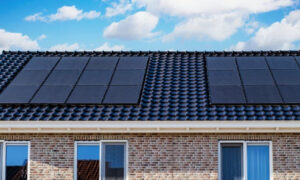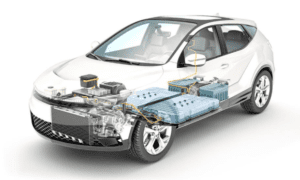Welcome to the electrifying world of the energy revolution! With every passing day, we are witnessing a powerful transformation in our energy systems that is set to change the course of our future. The era of electrification and renewables has arrived, unleashing an unparalleled potential to reshape how we generate, distribute, and consume energy. In this blog post, we will dive deep into this thrilling journey as we explore how these game-changing technologies are revolutionizing our energy landscape. So fasten your seatbelts and get ready to embark on a remarkable voyage that promises a greener, more sustainable future for all.
What is Electrification?
Everything we know about how energy is produced and consumed is changing as we transition to a more electrified world. Electrification can transform the power infrastructure of our economy, improve environmental health, expand access to quality healthcare, increase economic security, and promote social equity.
Unleashing the potential of renewables is essential to realizing these benefits. Renewables are becoming cheaper and more efficient every year, while emissions from power generation continue to decline. This growing synergy between renewables and electrification presents an unparalleled opportunity for transforming global energy systems in ways that benefit everyone.
Renewable energy has the ability to provide baseload power, meaning it can supply consistent electricity during peak demand hours without subsidies or penalty. This makes renewable energy a competitive alternative to fossil fuels in terms of price, reliability, and environmental impact. By integrating renewable energy into the grid, we can reduce emissions from electric power plants while providing cleaner electricity for consumers.
The electrification of transportation is another promising avenue for renewables integration into the electrical grid. Electric vehicles have many benefits over traditional combustion engine vehicles: they produce zero emissions when operated in clean mode; charge quickly; don’t require refueling; are lightweight; and pack significantly less cargo than a gas-powered vehicle. Cities could exploit these characteristics by charging electric cars at special charging stations located near transit hubs or pedestrian areas. In this way, Electrification provides an important means by which cities can improve air quality and make transit more accessible and cost-effective for citizens .
What are Renewables?
Renewables are an important part of the future of energy. They are a cleaner, more efficient option that can help us reduce our carbon footprints.
Renewables include solar, wind, hydroelectric, and biofuels. They all provide different forms of energy, but they all have one thing in common: they never run out.
Solar is by far the most popular form of renewable energy. It’s easy to install and doesn’t require any special infrastructure. Solar panels convert sunlight into electricity using photovoltaic cells.
Wind turbines use the wind to create power. turbines use the wind to create power. Wind turbines can be found onshore or offshore and can range from small propeller-driven units used for small farms to giant floating gearmills used by big companies like Walmart and Amazon.
Hydroelectricity is produced when water is turned into electricity using installed dams or run-of-river systems. A example of a dam that produces hydroelectricity is Grand Coulee Dam in Washington state.
Biofuels are fuels made from plants other than oil or gasoline. Biofuel production has the potential to reduce greenhouse gas emissions by replacing gasoline and diesel with fuels made from plant matter like corn, sugarcane, and soybeans .
What is The Potential of Electrification and Renewables?
The potential of electrification and renewables is revolutionizing how we produce and use energy. Electricity can now be produced from a wide variety of sources, such as solar, wind, hydropower, and natural gas. This has led to significant reductions in carbon emissions and improved air quality. In addition, renewable energy sources are becoming increasingly cost-effective, making them an attractive option for more countries around the world.
Conclusion
Undoubtedly, the era of electrification and renewables has begun to change our way of life for the better. Not only have they ushered in an age of energy security and sustainability, but their omnipresence is changing the very way we operate our businesses and interact with one another. We are now at a pivotal moment where we can harness this power to create a more equitable future for all. By learning about how these technologies work, you can start making strides forward in creating a cleaner, more sustainable world – one step at a time.



































